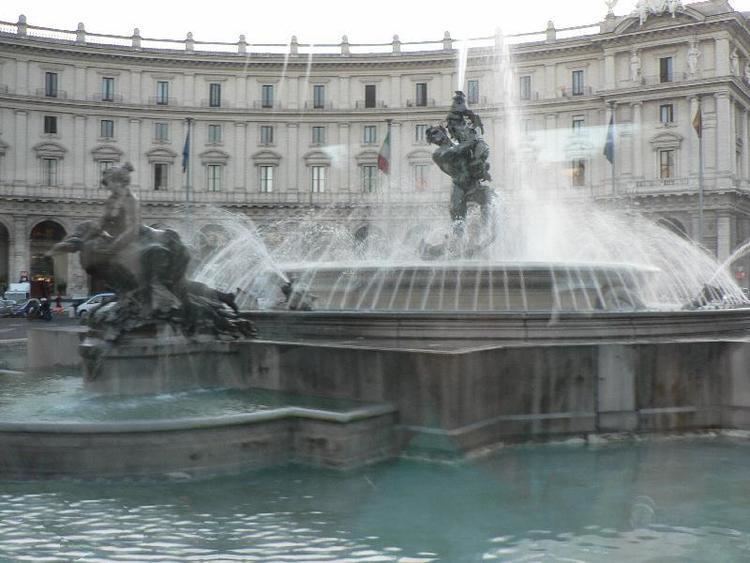Name Mario Rutelli | Died 1941 | |
 | ||
Harlem shake mario rutelli
Mario Rutelli (Palermo, Sicily, 4 April 1859 – 1941) was an Italian sculptor.
Contents
Whiteface clown mario rutelli bells
Biography
With a family descended from Scottish immigrants to Italy, Mario's father Giovanni Rutelli was a prominent architect in Palermo. Mario studied at the Accademia di Belle Arti di Palermo and then in Rome under Giulio Monteverde and Benedetto Civiletti, and Auguste Rodin in Paris.
From 1874 through 1897 Giovanni Rutelli's firm, Rutelli and Machi, was responsible for the construction of the monumental Teatro Massimo in Palermo, the 3rd largest lyric theatre in all of Europe. For his first major commission Mario contributed a lion and allegorical group representing Lyric Poetry flanking the theater's entrance. The corresponding lion representing Tragedy is the work of Civiletti.
Rutelli's likely masterwork is the 1901 Fontana delle Naiadi in Piazza della Repubblica, Rome, which Benito Mussolini called the "exaltation of eternal youth, the capital's first salute to art". The naked figures were controversial.
From 1903 to 1923 Rutelli was a professor of sculpture at his own school, the Accademia di Belle Arti di Palermo, and he also owned a foundry in via Gaetano Daita.
By the late 1920s Rutelli, who reached age 70 in 1929, could be described as "the oldest, most established, and most traditional of all Italian commemorative sculptors" of the time. For the Anita Garibaldi Monument, one of the statues and monuments of patriots on the Janiculum, Mussolini personally selected Rutelli for the commission, after rejecting designs by sculptor Ettore Ferrari. Reportedly Mussolini visited Rutelli's studio at least once to approve the design, and ordered that Anita be holding her weapon in one hand and her infant son Menotti in the other. The statues also form Garibaldi's tomb: the base holds her remains.
Rutelli is buried in the Cimitero di Sant'Orsola in Palermo. His great-grandson is the Italian politician and former Mayor of Rome Francesco Rutelli.
Work
Rutelli's work includes:
